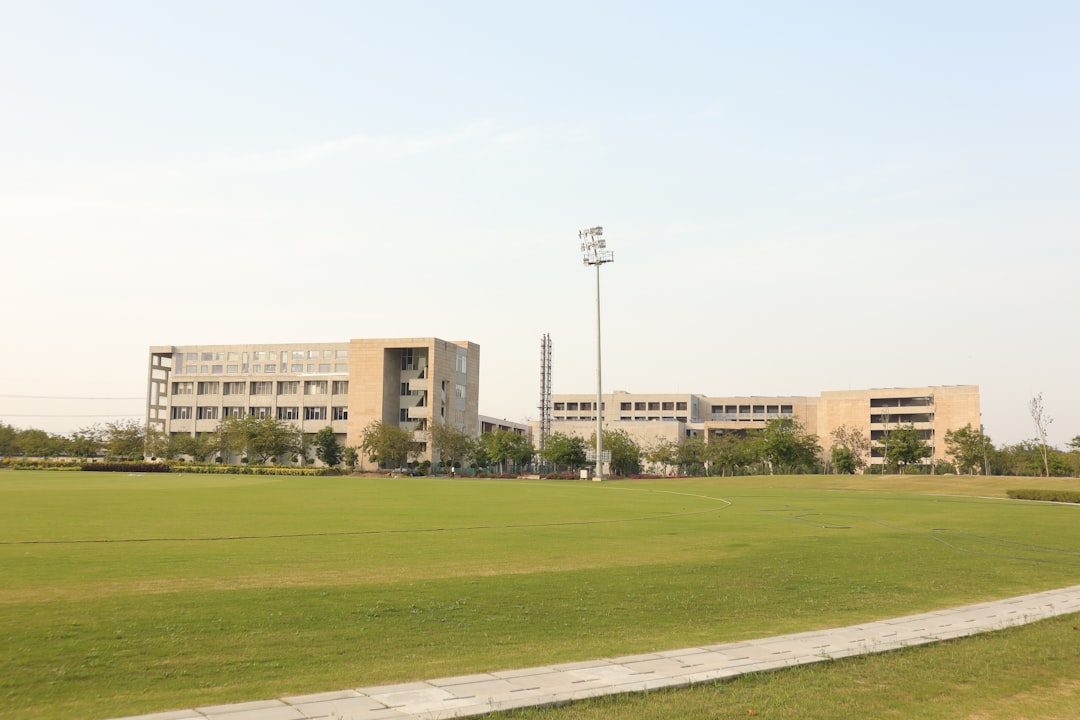SIBM Hyderabad Investment Value For Future Business Leaders Assessed
SIBM Hyderabad Investment Value For Future Business Leaders Assessed - Analyzing Stated Program Objectives for Future Readiness
Reviewing the publicly available program aims for SIBM Hyderabad reveals the intent to prepare individuals for future business leadership roles. The stated objectives often highlight goals such as equipping students for corporate careers, merging academic learning with practical application, and fostering leadership qualities applicable in dynamic and potentially challenging situations. Specific outcomes mentioned include gaining contemporary business knowledge for problem-solving, applying decision-making tools, and developing adaptability for evolving business landscapes. Acknowledging the need for skills beyond traditional knowledge, programs like Corporate Readiness explicitly focus on refining essential capabilities like communication, aiming to complement technical proficiency. The overall articulation of these objectives suggests an understanding of the complexities graduates will face, positioning the curriculum as an effort to build a foundation for navigating uncertainty and driving change.
Here are up to 5 observations stemming from an analysis of stated program objectives for future readiness:
1. Analysis suggests that an individual's perception of how well stated program objectives address "future readiness" is significantly filtered through their personal background and cognitive biases. This indicates that even identical written goals can be interpreted quite differently by various stakeholders, potentially leading to varied assumptions about the program's true focus and outcome.
2. Given their static nature, stated program objectives aiming for "future readiness" must implicitly manage the challenge of anticipating dynamic market shifts. Their effectiveness in signaling true readiness often relies more on emphasizing the cultivation of meta-skills like adaptability and complex problem-solving mechanisms, rather than merely listing acquisition of specific, potentially time-bound knowledge domains.
3. From a cognitive viewpoint, the precise linguistic structure and framing employed within stated objectives appear capable of subtly influencing students' approaches to learning and their level of dedication towards developing competencies such as leadership. This suggests the wording itself could play a role in the actual translation of educational goals into applied skills in subsequent professional contexts.
4. External scrutiny views these stated objectives as vital signals to the market—specifically potential employers and strategic partners. They communicate the program's intended calibration towards producing future business leaders, and the perceived value of the program is influenced by how well these stated intentions seem to align with forecast needs within various industries.
5. A granular review of stated objectives can sometimes inadvertently highlight what might be termed the 'unspoken curriculum'—essential skills or perspectives for future leadership that are not explicitly foregrounded or perhaps are unintentionally downplayed. Identifying these potential areas of de-emphasis can expose possible mismatches between the program's articulated vision for readiness and the complex, evolving requirements of the future business environment.
SIBM Hyderabad Investment Value For Future Business Leaders Assessed - Evaluating Placement Track Records Past and Present Context
Assessing the tangible value proposition for aspiring business leaders necessitates a look at the program's history of placing graduates into roles, examining both past trends and the most current outcomes available as of 11 Jun 2025. Information circulating recently points to reported figures for the graduating batch, citing a peak salary package and a particular average compensation. While the involvement of various well-known companies in recruitment activities suggests a degree of industry connection, raw placement numbers alone don't tell the complete story of value return. Interpreting these statistics requires caution; reported averages can sometimes mask a wide variance in actual outcomes across the graduating cohort, and the consistency of performance across different economic cycles or sector shifts is a critical factor for evaluating long-term investment worth. The effectiveness of a program's placement record isn't just in achieving high figures for a select few, but in demonstrating a reliable track record of securing meaningful career starts that justify the significant time and financial commitment from a broader base of graduates aiming for leadership paths. Thus, while recent reports offer a snapshot, a more critical evaluation considers the data within the context of market dynamics and the potential volatility inherent in placement cycles.
Regarding the evaluation of placement track records in past and present contexts for business programs, here are up to 5 observations:
1. A straightforward metric like "average salary" in reported placement outcomes frequently lacks crucial detail; it typically does not differentiate between base pay, variable bonuses, or long-term incentives, nor does it readily provide insights into the statistical distribution beyond the mean, like the median, which could be more representative in skewed data sets.
2. Short-term placement figures appear highly susceptible to broader economic trends and specific industry hiring cycles prevalent at the time of graduation, suggesting that year-to-year variations might often reflect external market volatility more than inherent changes in the educational program's effectiveness or the quality of the graduating cohort.
3. Standard placement summaries commonly exclude graduates who secure roles via personal networking, embark on entrepreneurial ventures, or elect to pursue further academic degrees, introducing a potential selection bias where the reported statistics represent only a subset of the total graduating population and may not capture the full spectrum of post-program outcomes.
4. Evaluating the qualitative nature of roles secured—specifically, whether positions offer meaningful responsibility, opportunities for strategic contribution, or clear pathways for career advancement and leadership development—is a critical dimension often not transparently communicated in standard placement reports, yet it is arguably more indicative of long-term career potential than just the initial compensation package.
5. Assessing the true "investment value" for aspiring future leaders necessitates a longitudinal analysis of career trajectories, tracking graduates' professional progression, impact, and leadership roles over several years post-graduation, which is a significantly more complex and data-intensive undertaking than relying solely on the immediate snapshot provided by entry-level placement statistics.
SIBM Hyderabad Investment Value For Future Business Leaders Assessed - Assessing Curriculum Responsiveness to Evolving Business Leadership Needs
Addressing the continuously changing demands placed upon future business leaders necessitates a sharp focus on how educational programs adapt their offerings. With markets in constant flux and new challenges arising frequently, the ability of a curriculum to remain agile and responsive is paramount. Preparing individuals effectively requires moving beyond just teaching core business principles to actively integrating contemporary trends and emphasizing the development of the crucial interpersonal and adaptive capabilities essential for navigating complex environments. A critical assessment is needed to determine if current academic structures adequately bridge traditional learning with the practical requirements of the modern business landscape, ensuring graduates possess both the theoretical grounding and the versatile skills needed to drive innovation and lead through uncertainty.
Here are up to 5 observations regarding assessing curriculum responsiveness to evolving business leadership needs:
1. Evaluating how effectively a program adapts requires acknowledging that the utility lifespan of discrete technical knowledge in many business areas is rapidly contracting. This suggests that assessing true responsiveness might focus less on specific factual content mastery and more intently on the cultivation of underlying cognitive flexibility and complex analytical frameworks needed to navigate new information, reflecting insights from learning science.
2. Developing the kinds of leadership qualities increasingly valued as of 11 Jun 2025—such as nuanced ethical judgment in automated environments, genuine collaborative capacity, or systemic risk comprehension—presents a measurement challenge for traditional academic evaluation methods, implying a need for novel assessment approaches potentially informed by fields like organizational behavior or behavioral economics to gauge genuine development.
3. The inherent structure of many academic institutions often results in curriculum review and modification cycles that span multiple years. This relatively deliberate pace appears potentially misaligned with the much swifter tempo of technological evolution, geopolitical shifts, and market dynamic changes that define contemporary leadership challenges.
4. Determining a program's success in cultivating crucial, less-tangible future leadership attributes like resilience or effective cross-functional collaboration seems to demand more sophisticated long-term evaluation, potentially involving qualitative tracking and analysis of alumni career paths and impact over a significant post-graduation period, rather than relying primarily on initial employment data or typical graduate feedback mechanisms.
5. It seems plausible that a significant component of preparing individuals for adaptive leadership roles is absorbed through the implicit learning embedded within the pedagogical approaches employed—such as how complex scenarios are dissected in case studies, or the dynamics fostered in group projects—which poses a challenge to formal "assessment" of responsiveness based solely on documented course content or learning objectives found in syllabi.
SIBM Hyderabad Investment Value For Future Business Leaders Assessed - Campus Environment and Resources A Value Perspective
As of this point in June 2025, reviewing the campus environment and the resources available at SIBM Hyderabad provides one lens through which to consider its value for future business leaders. The provision of infrastructure, including a substantial library described as hybrid and extensive, alongside residential facilities like hostels, appears designed to support student life and academic pursuit. These physical and digital resources aim to foster a setting intended for overall student development and learning. However, the crucial aspect for potential leaders isn't merely the presence of facilities or the quantity of books and databases. A more pertinent question is how effectively this environment and its resources actively cultivate the adaptability, critical thinking, and practical skills required to navigate the unpredictable modern business world. While offering a base for traditional learning, the tangible value for shaping future leaders depends significantly on whether the campus experience pushes beyond mere academic convenience to truly integrate and enable the development of robust capabilities needed outside the campus gates. The test lies in its impact on genuine readiness, not just its provision of tools.
Looking at the physical and systemic infrastructure provided by a campus offers another lens through which to examine potential investment value for those aspiring to lead. Beyond the structured learning inside classrooms, the environment itself and the accessible resources can function as often-underappreciated mechanisms for developing future leaders. Assessing these elements requires considering how they facilitate interaction, provide tools for exploration, and support well-being, all crucial for navigating demanding professional paths.
Here are up to 5 analytical points stemming from an examination of a campus environment and its resources in this context:
1. The subtle architectural choices and allocation of informal meeting spaces across a campus appear to critically modulate the probability and spontaneity of unscheduled peer-to-peer interactions and inter-group knowledge exchange, which may underpin the organic development of professional networks and collaborative capabilities.
2. Availability and intuitive access to a diverse spectrum of technological and informational assets—ranging from extensive digital library databases and specialized simulation tools to robust network connectivity—can act as a foundational layer, potentially empowering students to engage in self-directed, applied problem-solving distinct from formal course assignments.
3. Observation suggests that the quality and accessibility of non-academic support systems and facilities, including mental wellness resources or simply the availability of green spaces, might indirectly correlate with student resilience and capacity for focused effort, qualities increasingly relevant for sustaining performance in high-pressure leadership roles.
4. The efficacy of centralized resources like the learning resource center's vast collection of journals, cases, and electronic books is not solely a function of volume; its actual value generation is constrained by factors such as ease of navigation, the currency of holdings, and how actively these resources are integrated into required work beyond basic citations.
5. While location proximity to a city like Hyderabad provides potential linkages to external industry ecosystems, the actual value for leadership development hinges critically on how effectively the campus infrastructure and administrative functions facilitate the translation of this potential into concrete opportunities for engagement, exposure, or project work, rather than remaining a passive geographical feature.
More Posts from effici.io:
- →7 Data-Driven Techniques for Non-Technical B2B Founders to Assess Technical Talent in 2025
- →7 Data-Driven Communication Techniques That Measurably Boost Team Alignment in Remote Settings
- →Examining the Pitfalls Blocking Operational Efficiency
- →Fact-Based Strategies for Breaking Through Career Plateaus
- →AI-Driven Performance Metrics How Machine Learning is Revolutionizing KPI Analysis in Management Consulting
- →7 Key Metrics for Measuring AI Impact on Product Development Efficiency in 2025

